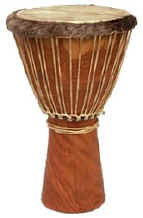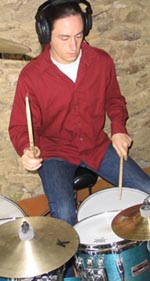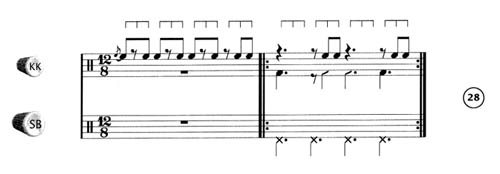Go to the
Rhythmweb book review
| Visit Maarten Schepers'
website
| Rhythmweb home
Origin: Malinke Ethnic Group - The Soli
rhythms accompany the initiation and circumcision rites which
symbolize the passage from childhood into adulthood. in the past, the
villagers chose a date in the year to initiate children that are approximately
seven years old. As of this date in time, the musicians then played Soli
regularly. the initiation took place outside the village, and lasted for
three months. an adult in charge taught the children various notions on
how to behave in the community and also some basic occupational skills
and knowledge of plants and animals.they were put through many tests and
recieved advises[advice]. In this way, traditional values were transmitted
from generation to generation.
The initiation ended with circumcision. As this date approached,
the Soli rhythm was played on a more regular basis. It was played every
day of the last week, through to the final night. of the final day. after
that, Soli was not played again until the next initiation.
Nowadays initiation rites are shorter and only found in
the villages. In the cities, children are circumcised in the hospital
when they are 40 days old, and the initiation rite no longer exists.
The Soli rhythm is very popular today. We find it in many
forms in west Africa (Soli Lent, Soli Rapide, Wassolon Soli, Soli des
Manian, and Balakulandjan, all of which make up the Soli family)
We have also found Soli in good recorded form along with Soli des Manian
and Balakulandjan at TonTinKKan.net,
a worthy site in its own right.


Maarten Schepers at the drum set.
|
Original instrumentation
Further explanations: The dots on the djembe parts represent the strong
hand (open circle) and the non-dominant hand (dot). The examples are recorded
at 120 BPM, but it is often played much faster. Click on the music to
hear the mp3 example, starting with #1. (No recording of the call appears
separately, since it occurs at the beginning of all the other parts.)






Listen to
the parts all superimposed [example 6]
Below is another kenkeni pattern for Soli, one which we
find in many tertiary rhythms:

These are only the basic parts. Many variations and further details are
in the book .
Drum set Soli
This is in another section of the book entirely. The hat is played on
the beat throughout, but of course this will be optional in actual practice.
First he runs through dununba, sangban, and kenkeni parts separately,
each with it's bell part on the ride cymbal. Then individual parts are
combined, and the djembe parts are thrown into the mix, often substituted
for the kenkeni.The possibilities are many. Of course there are not enough
limbs to do them all at once, so various combinations are used. Here,
for example, is number 27, the kenkeni and dununba parts combined. once
again, click on the image of the music to hear the mp3.

For his next example, the kenkeni and sangban parts are combined. it
seems that the sangban parts are covered up a bit by this mix, so one
might try increasing volume on that limb, or switching to a little bigger
drum for the sangban part, to get it to stand out more, but you get the
idea. It stimulates the imagination as to the possibilities.

|












